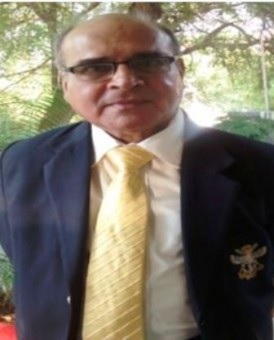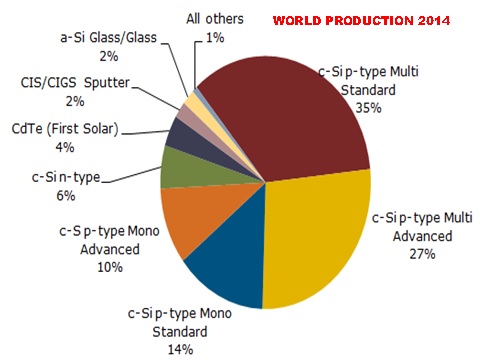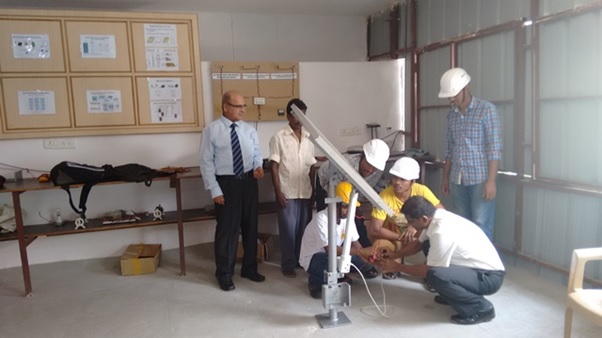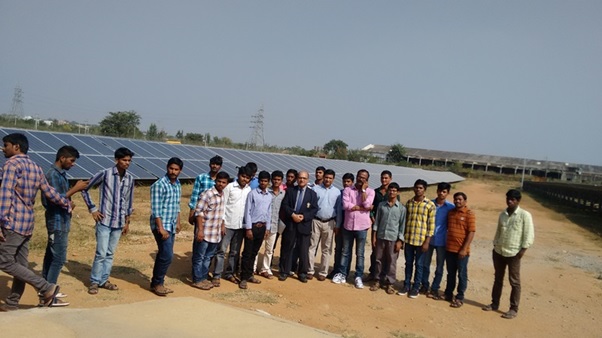Introduction to Col (Dr) TS Surendra
THIRUVAZANDUR SRINIVASA SURENDRA, or TS Surendra joined the NDA in July 1962. His given name was a bit tough for his buddies, so he permitted them to call him ‘Tejinder’. Academics were his forte. The Army spotted his strength when he won the Gold Medal on the Degree course. He was deputed to go to IIT Delhi in 1975 for a Post-Graduation in Power Apparatus & Systems and by the time he completed his M Tech, it was clear to him as also to everyone else that he was intellectually cut out for Industry and the Academia. He left the Army soon after completing his minimum pensionable service and after a very successful stint with the nascent photovoltaic solar energy industry; he completed his PhD in engineering and joined an Engineering College, where he rose to become the Director. After retiring from that post, he is now working full time at the Surabhi Institute of Renewable Energy (of Surabhi Educational Society) as the Chief Adviser Solar Skill Development programs.
(Please link this with our earlier article on this subject by clicking on http://amolak.in/web/tame-the-sun-on-your-rooftop/)
*
COL SURENDRA’S RESPONSE TO FREQUENTLY ASKED QUESTIONS ON SOLAR POWER
Q No 1 Who makes the best modules in India and what should be the cost?
There are more than 100 manufacturers of PV (Photovoltaic) modules in India some of whom have set up excellent facilities in their plant (ISO9001 & ISO 14001 certified). By ‘best’ PV modules, we are talking about PV modules that meet performance standards as defined by IEC 61215 (for crystalline Silicon PV modules) and IEC 61646 (for amorphous silicon or a-Si PV modules). PV modules are also required to meet IEC 61730 – 1,2 safety standards. The certifying agencies range from TUV Rheinland, UL (Underwriters Lab) etc. Today since 90% of the production of PV modules is based on crystalline silicon technologies (mono-crystalline Silicon and poly-crystalline Silicon, with the latter dominating), only such PV modules are considered. Thin film PV modules (silicon such as a-Si & non silicon such as Cadmium Telluride, CdTe, and Copper Indium Gallium diselenide, CIGS) are not considered as they are yet to penetrate the market in a big way. See pie-chart below (2014 figures).
In India there are manufacturers of repute such as TATA POWER SOLAR SYSTEMS, VIKRAM SOLAR, INDOSOLAR, MICROSOL, BHEL, REIL etc whose PV modules are certified as per IEC standards. Today the prices range from Rs 30 to Rs 38 per watt depending on the volumes. I am reproducing below the specifications of the PV modules we had used during my tenure with an Engineering College (yr 2013). The manufacturer is a small player but had the certification according to IEC standards (TUV, UL etc).
The size of PV modules for home application are generally 250 Wp (watts peak) – 230 to 260 Wp. Polycrystalline (cast silicon) PV modules are more popular as against Mono-crystalline PV modules (whose wafers are made from silicon ingots resulting from the Czochralski process that we have studied in semiconductor production).
When buying PV modules, the purchaser must also check out the track record of the Supplier/manufacturer and his commitment to after sales service.
Q No. 2 If one wishes to use the power in one’s own house, how many batteries are needed?
This would be dictated by the load that is required to be powered by the battery in the absence of the Sun. Generally the battery has a built in reserve capacity (autonomy)- say 4 to 5 days or even 10 days at times to cater for non-sun days. This is for an off grid system. But for grid connected systems, the battery size can be kept small. I have a 750 Wp PV system on my rooftop which is grid supported. Power is only taken from the grid but not fed to the grid. The loads include a light and fan in each of the 7 rooms (4 bed rooms, drawing room, dining room, kitchen). A TV is also powered. I am also able to connect my refrigerator (inverter type), when I wish to. The inverter I use is a Neowatt Sunbird -1000S , 1 kW that has a MPPT charger (Max Power Point Tracking), a PWM inverter (bi-directional) apart from protective devices. I do not run my ACs though. The PV modules (3 series connected 250 Wp 60 cell modules) give a voltage at max power of 30×3 (90 volts DC) , which is the input to the inverter. The MPPT has a range from 65 to 110 Volts. The MMPT charger charges the battery when the sun is available and also supplies the Inverter. When the sun is not there (cloudy) or at night, the battery powers the load till it discharges to its lower threshold (80% DOD, depth of discharge). I use two numbers of 15O AH battery connected for 24 Volt DC operation. When it discharges to its maximum DOD, the grid takes over to power the load and charge the battery to a certain level when the battery takes over. The next morning when sufficient intensity of light is available, the Sun takes over. The switching in all cases is automatic thanks to a DSP controller. I get a battery backup of up to 2 to 3 hours or so depending on the loads I want powered. For a 3 kWp system, 4 numbers of 12 V, 150 AH can be used connected for 48 V operation. A hybrid inverter can be used.
Q No 3 Who is the best manufacturer of the charge controller?
There is any number of manufacturers (MSME). I can refer you to Consul Neowatt Power Solutions Chennai. Their inverters are multifunctional – charge controller, MPPT and bi-directional inverter. I have also used REFUSOL 3-phase inverters for a 100 kWp plant in my previous College where there is no battery back up. Please see website www.enfsolar.com Also www.PVInsights.com
Today, where battery backup is not there and PV power is fed to the grid, after meeting the load requirements, the danger is when there is a power outage, the PV power is wasted. People have got around this by providing battery backup but the grid is still isolated (Anti-islanding protection). In the latter case only the battery, charged by PV earlier, powers the load. People are coming up with innovative and smart solutions.
Q No.4 Is it better to go in for ‘net metering’ or ‘gross metering’ and why?
Theoretically net metering. But a proper policy is yet to be put in place. Hence net metering has not taken off in a big way. Puducherry is an exception perhaps. Please read the attached article which discusses net metering in some detail. In some countries, the FEED IN TARIFF (FIT), when power is fed to the utility grid, is higher than the tariff for importing power from the grid and is favorable to the consumer.
The author explaining the nuances of single axis tracking in the Labotatory
Col (Dr) Surendra posing with his students and senior staff during a site visit to a 3 MWp solar PV power plant (ground mounted).
Tailpiece
“We are all aware of the ‘future shock’ syndrome: what is state-of-the-art today is obsolete tomorrow. That will be true at some point of time with what I have put down! There is always a better way of doing things. I remember reading a message board near the RSI, Sec’bad which reads “Remind yourself that it is okay not to be perfect”. Nice one, I think.
Queries or Clarifications
If you need any further information on this subject, please write to Col Surendra. His mail ID is surendra.ts












Sir,
Thanks for the information.
Prakash
You are welcome
wazir singh Choudary
Apr 24 (1 day ago)
to Maj
A very educative email. Thank you Gen Surjit for providing this
informative write up of Col (Dr) Surendra.
Wazir Choudhary
Thank you for your feedback Sir
Thank you for this article. Really interesting for all human beings who care about Carbon emissions and want to keep it low, especially for Indians.
Well said Madam. Let our generation not create climate change problems and leave it to future generations to face the consequences. We have to reduce the carbon footprint appreciably now. Using solar energy or, for that matter, renewable energy is a definite step in that direction. Thanks for your post.
This col is worth his wt in gold.
Thank u Surjit.
Jlm
Thank you Sir for your kind words. I am deeply indebted to the Army for giving me the opportunities in life.
Sir.
Very informative.
sbsk
Thank you Sir for your feedback.
Dear General,
Thanks for sharing.
Leaving Rewa by end of April.
New address: Bishan Vihar, Urban Estate Phase 3, Dugri, Ludhiana.
Regards
HIS
Thanks Brig Aurora
Thanks for very informative article on solar energy.Regards
Nirmal Singh Maunder
Thanks for your feedback. I feel encouraged
Thank you Sir.
regards
Hari
Nice to hear from you Sir
Dear General,
Col. Surendra’s advice is spot-on (and current). My own experience would have been far too anecdotal.
I’ve been reading a troubling book by Samanth Subramaniam called “This Divided Island”. He calls the Indian role, in passing, a “diplomatic fiasco”, both in terms of getting the IPKF involved as well as in not intervening in the final stages of the civil war in 2009.
I sometimes like to think, what other choices could we have exercised? In hindsight, no doubt, several exist.
But, when asked to intervene by a neighbouring Government, how can one refuse? And in 2009, how can one get involved without being asked by either (or both) combatants?
Over a million Sri Lankan Tamils have been displaced, and no doubt Prabhakaran let them down badly, both in terms of providing ideological leadership and in terms of protecting them in the war’s final stages.
Since you might have an insider’s look, a piece on this would be much appreciated.
Regards.
Sriram
Thanks for your positive feedback on my Solar PV inputs, Sir.
Sat Sri Akal to you Surjit ji and Surinder
Your articles are so informative and interesting. I enjoy them thoroughly, even if I don’t respond.
With lots of love and regards,
Gaddy
Thank you for finding my article interesting
TSS,
Very comprehensive and cogent. Thanks.
I find that solar systems are also being used for cooking. In Shirdi they have a very impressive kitchen. A link is given below.
https://www.youtube.com/watch?v=CFU9hI8kZbI&feature=youtu.be
Why can’t the military use this concept? I think the NDA should install one, and tag centres can follow.
Surjit
I agree Sir. There has to be a change in the mindset I believe.
Wow, Suredra- this is mind blowing! Come home and decipher all this esoteric stuff for simple-minded soldiers like me.
But I am highly impressed even if a bit confused.
Yogi
Thank you Sir for your words of encouragement. I will come over to your place with prior intimation.
Very informative article, Col Surendra. Grateful for sharing this with all of us.
You are welcome
Col (Dr) TS Surendra is doing noble work providing free consultancy in solar power.
Thank you sir, for these valuable insights.
You are welcome Sir. I will be glad to share whatever little I know.